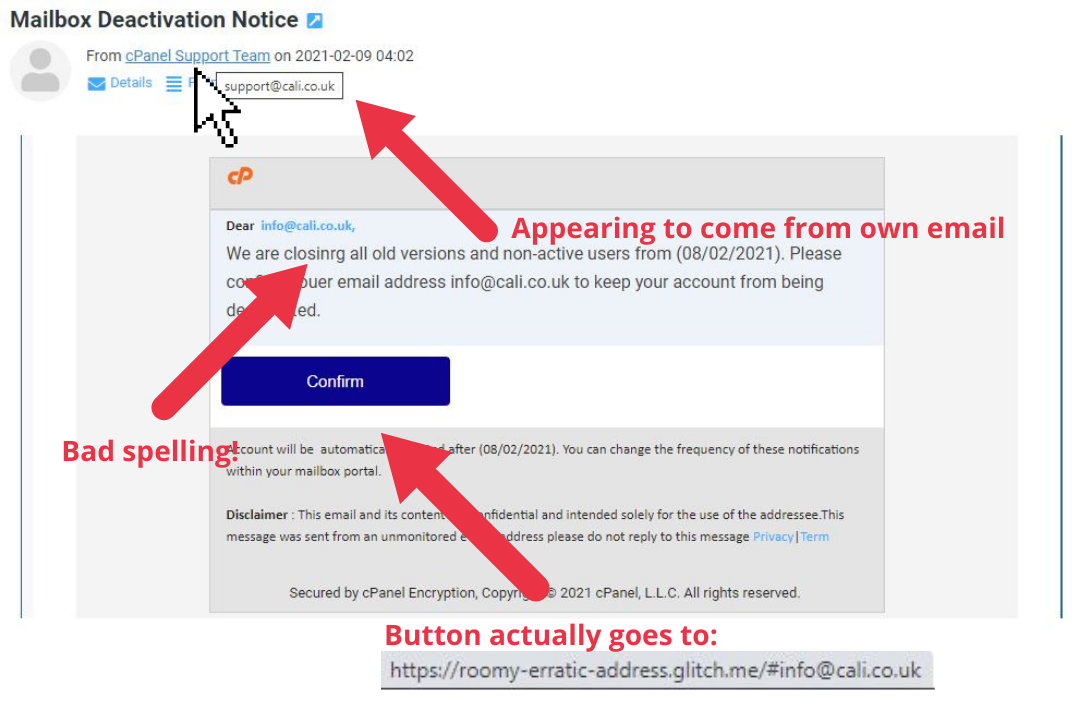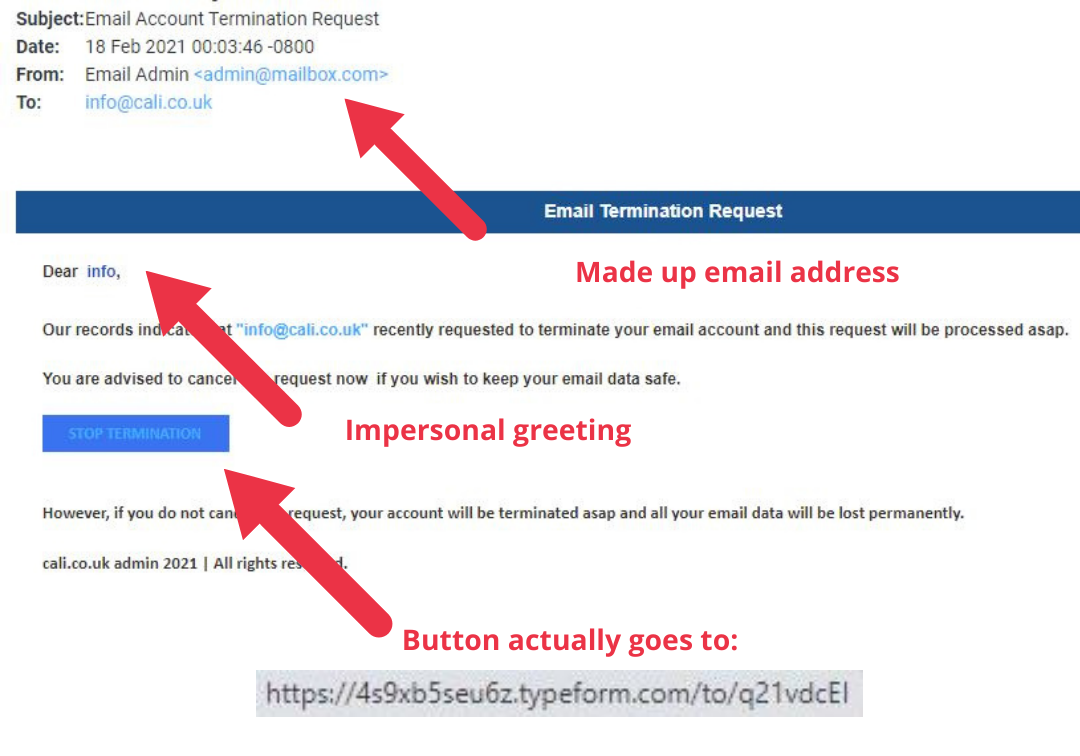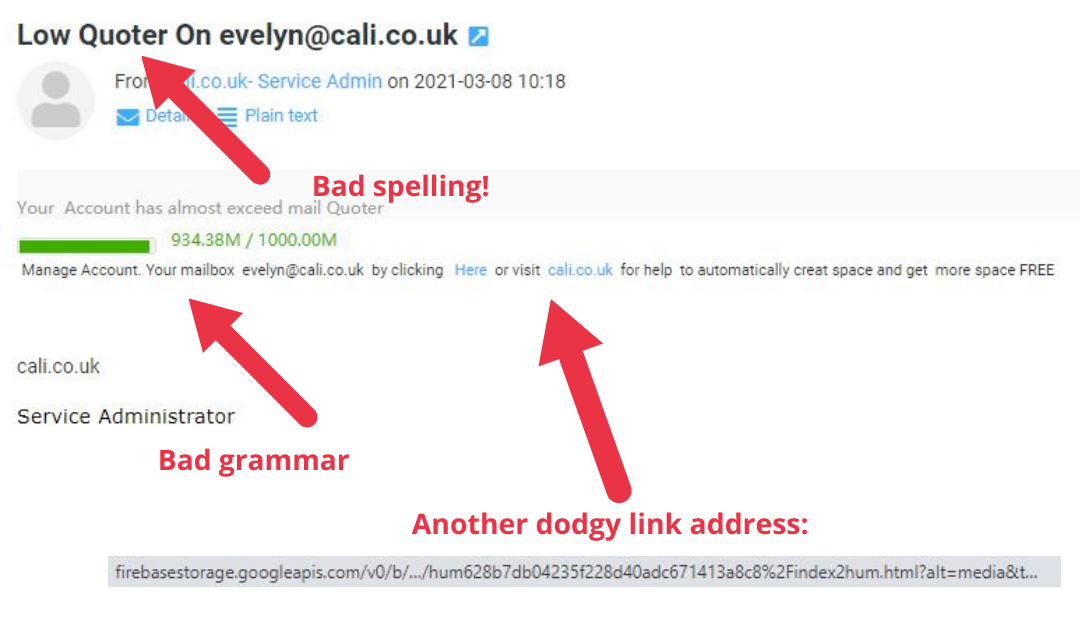
Spam and Scams! Since lockdown last year, there has been a 30,000% increase in the amount of phishing emails doing the rounds. Criminals have been going all out with spam emails to try trick internet users. Whether it’s trying to cash in on Covid, sending emails to pretend to be people you know, or faked message to try and get your login details, we’ve seen it all.
So how do we tell what’s a genuine alert, and what’s a spam or phishing email?
Here are our top 5 points to watch for:
1 – Urgency. Does the message have a subject line and message content that is designed to make you react. Does it threaten you in some way? Panic can often lead a person to click on a link, in the moment, rather than taking a considered response.
2 – Email Sender. Who has sent the email, do you recognise both the senders name and the corresponding email address? Spoofers will use a name you might recognise, but use a fake email for sending. They might use a generic email address like @mailbox.com. Spammers will also fake the email to appear to come from your own email address, to try and bypass spam filters and to shock you.
3 – Impersonal. Are the greetings within the message what you’d expect? If the Dear *name* looks impersonal, or the signature of the email doesn’t look how it usually would, think carefully before clicking on any links.
4 – Bad spelling and grammar. Spam emails are often very carefully created, and look like emails from the real companies. They can be hard to spot. But we see a lot of spam emails where the content is poorly created – bad spelling and grammar are a massive giveaway to the email being a fake.
5 – Buttons & Links. Without actually clicking on links you can see where a link or button will go. If you move your mouse over a hyperlink, the destination (if you were to click) should show along the bottom edge of your browser window. Check and see where the link is trying to take you. If it’s to an address that isn’t the correct domain, then steer well clear!
So our overall advice is to take your time, don’t be rushed by an email that appears to need your instant response. Check those details of the email to see if it’s an email from a company you’d expect to hear from, or just a chance/random email. Look for obvious signs, and the less obvious ones, like those hidden link destinations. If you’re not sure, or you are concerned, please do check with the organisation involved to see if it’s genuine, or forward to our [email protected] email address and we can check it for you.
Below are 3 recent example emails we received, to illustrate some of the things to watch for:



Calico email services come with Basic free antispam options built in, you can enable these via your mail control panel. If you need any assistance, then please contact our team. We also have the advanced Calligate Antispam bolt on, which offers more in-depth filtering functionality.

